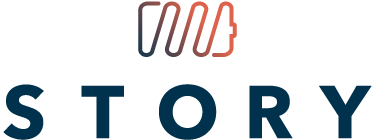Welcome to STORY added value of storage in distribution systems.
STORY is a European project researching new energy storage technologies and their benefits in distribution systems and involves 18 Partner Institutions in 7 different European countries.
The ambition to increase the share of renewable energy sources in the energy system inherently leads to several challenges. One of those challenges is the temporal mismatch between the energy demand and the renewable energy production which has an intermittent nature. Energy storage offers the possibility to decouple demand and supply and to add flexibility to the system.
Thermal energy represents the largest share of the final energy consumption in the residential sector in the EU with more than 75% for space heating and domestic hot water production combined (Commission, n.d.). Thermal storage can play a supporting role for the local electricity grid, if electrically driven. This includes heat pumps, CHPs (combined heat and power) and electrical boilers, which, in the presence of storage, can be used in a more flexible way. Different kinds of technologies are available for thermal storage like sensible, latent and thermochemical options. Sensible thermal energy storage is the most commonly known and wide-spread technology in the form of hot water storage units. Additionally, it is the cheapest way to store thermal energy.
To optimally control the energy system where thermal storage is present, accurate knowledge on the state of charge (SOC) of the storage unit(s) is required and can be a good basis for new business models. The state of charge is a metric to quantify the amount of energy that is stored in a given unit at a given time. The value is usually quoted as a percentage.
The demonstrators in the H2020 STORY project provide an excellent opportunity to develop methods that can estimate the SOC of thermal storage units.These methods rely on a combination of temperature measurements and (physical) models.
In total, a number of different storage tanks have been used to develop and test the SOC methods: two seasonal storage tanks of 12 m³ each as well as a solar boiler (domestic hot water storage tank heated by thermal solar collectors) are used in the Belgian residential demo site (Oud-Heverlee) that serves as a Living Lab for storage solutions. A heat pump boiler is used in the neighbourhood of the Living Lab. Furthermore two large scale industrial storage units (20 and 50 m³ respectively) are used in another Belgian STORY demo site at the Beneens construction company.
It should be noted that adding energy to a thermal energy storage device does not automatically lead to an increase of the SOC. For this to happen, at least a portion of the storage volume should already be above the minimum temperature (see also below). In case this condition is not met, the SOC will be 0%. When heat is added using an internal heat exchanger, the temperature in certain parts of the storage tank will increase gradually, but the SOC will remain 0% if there is no water present with a temperature above the predefined minimum temperature.
In a similar fashion it is also possible for the SOC to change when no heat is added or removed, due to standing losses or loss of stratification.
Duration
01.05.2015 – 30.04.2020 // 5 years // 60 months
Funding program
This project has received funding from the European Union’s Horizon 2020 research and innovation programme under grant agreement No 646426
Key words
Energy storage, local/small-scale storage, smart grids, thermal storage, electrical storage, renewable energy, large-scale impact
Develop
Viable storage and ICT technologies
STORY
18 project partners in 8 countries all over Europe
Demonstrate
On a number of sites
Analyze
Impact of large penetration of the developed technologies through simulations
Cases
– 8 with different local / small-scale storage concepts
and technologies
– Covering industrial and residential environments
– Feed into a large-scale impact assessment
Creating the future of energy storage
“If you can control it, then you are not afraid of it” and you can use it to create added value. The STORY solutions enable us to control the unpredictable energy and therefore help us with overcoming the fear of variable production of RES and unwanted network problems associated with them.
